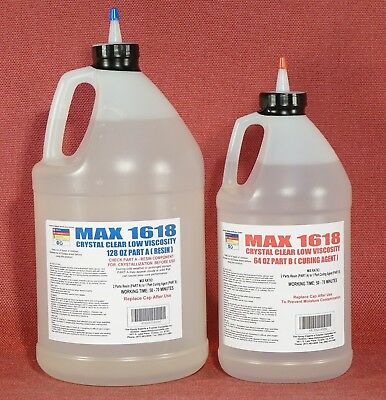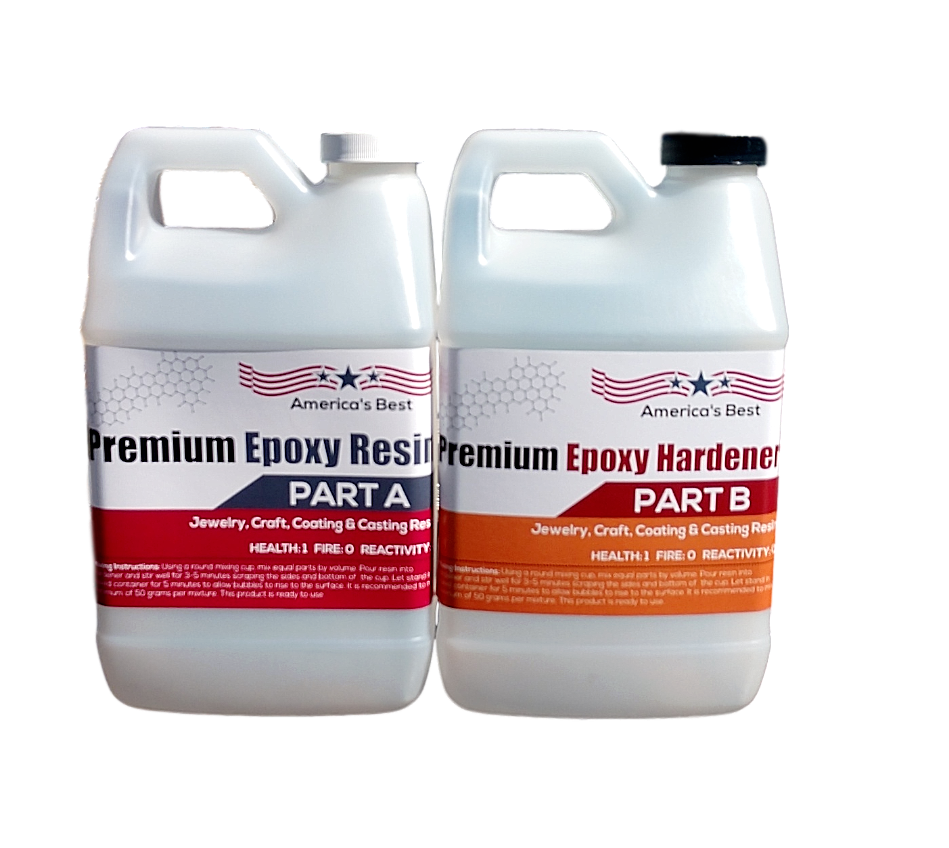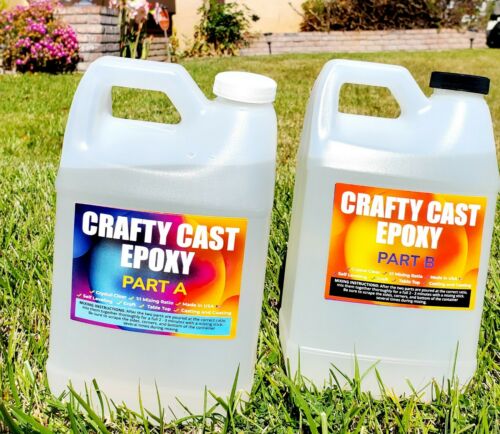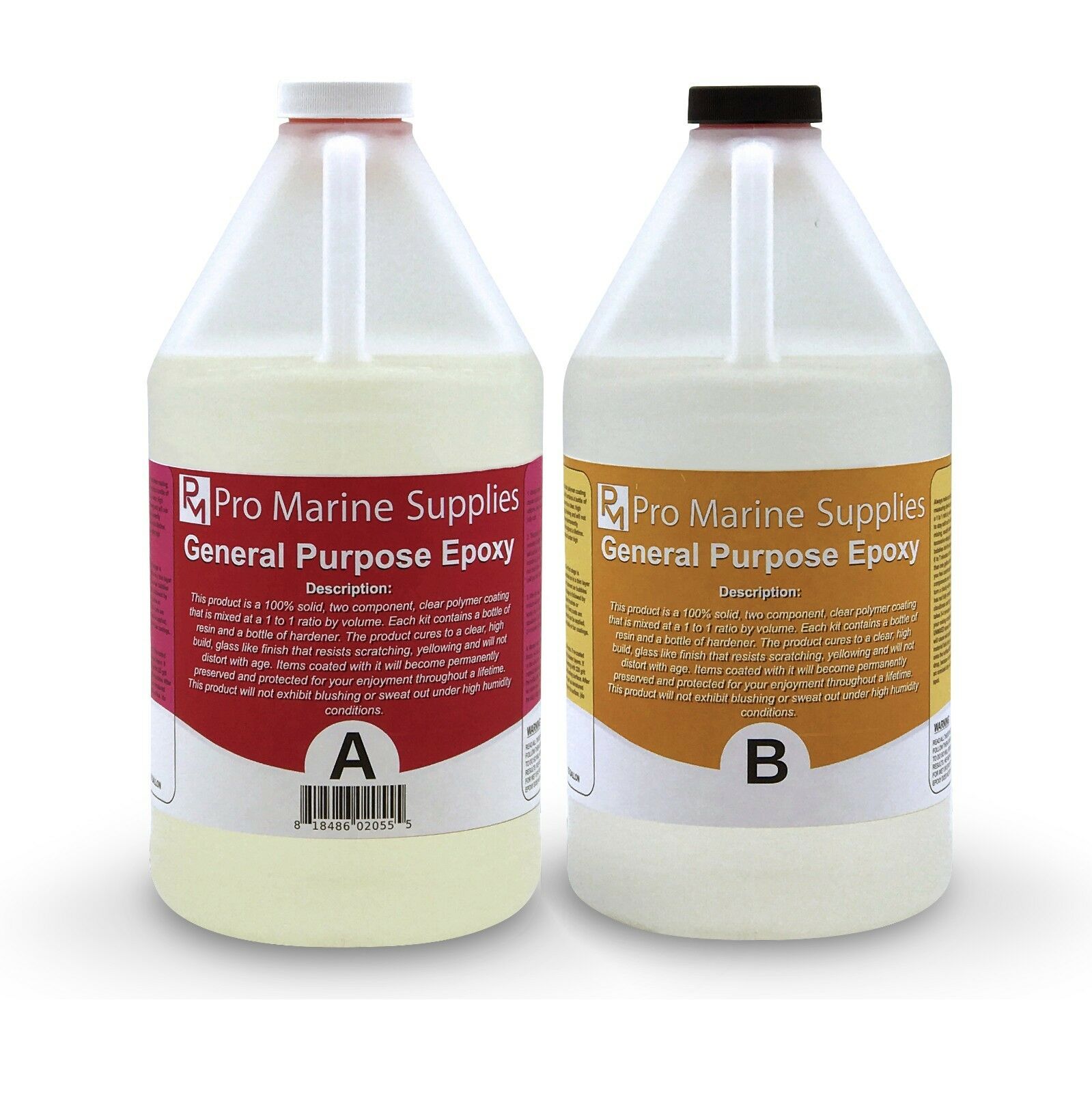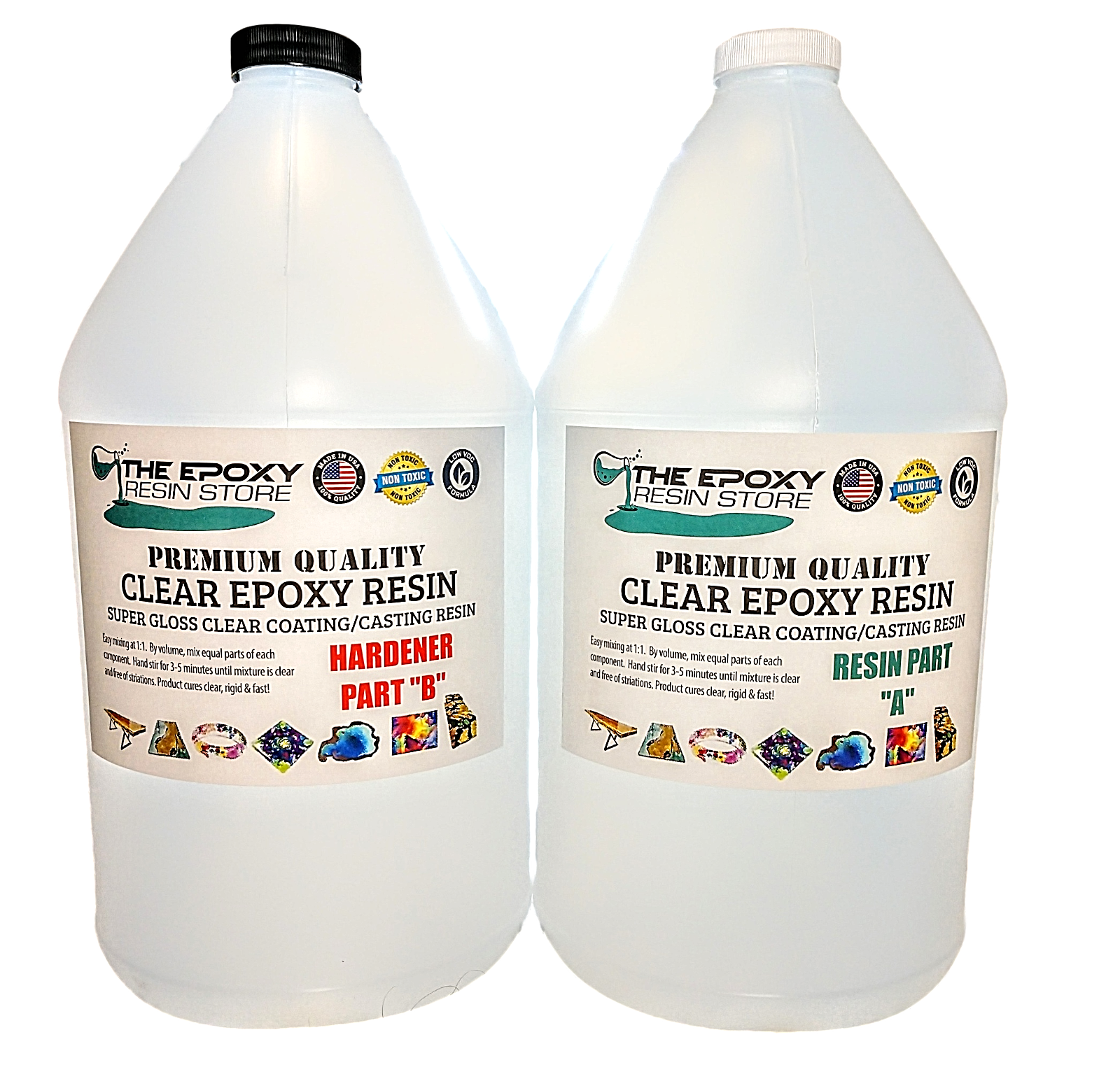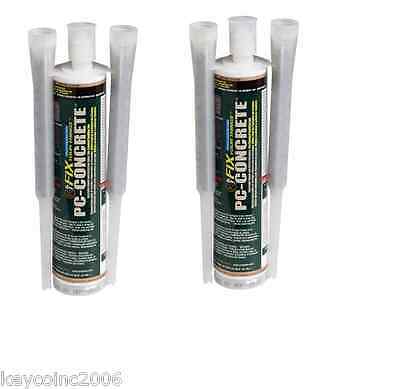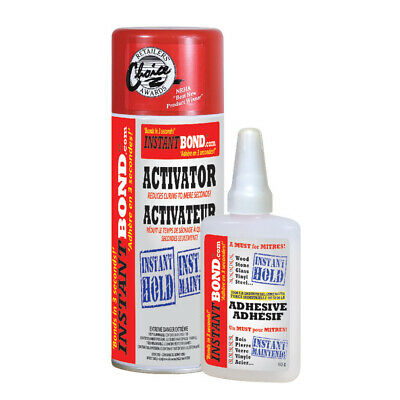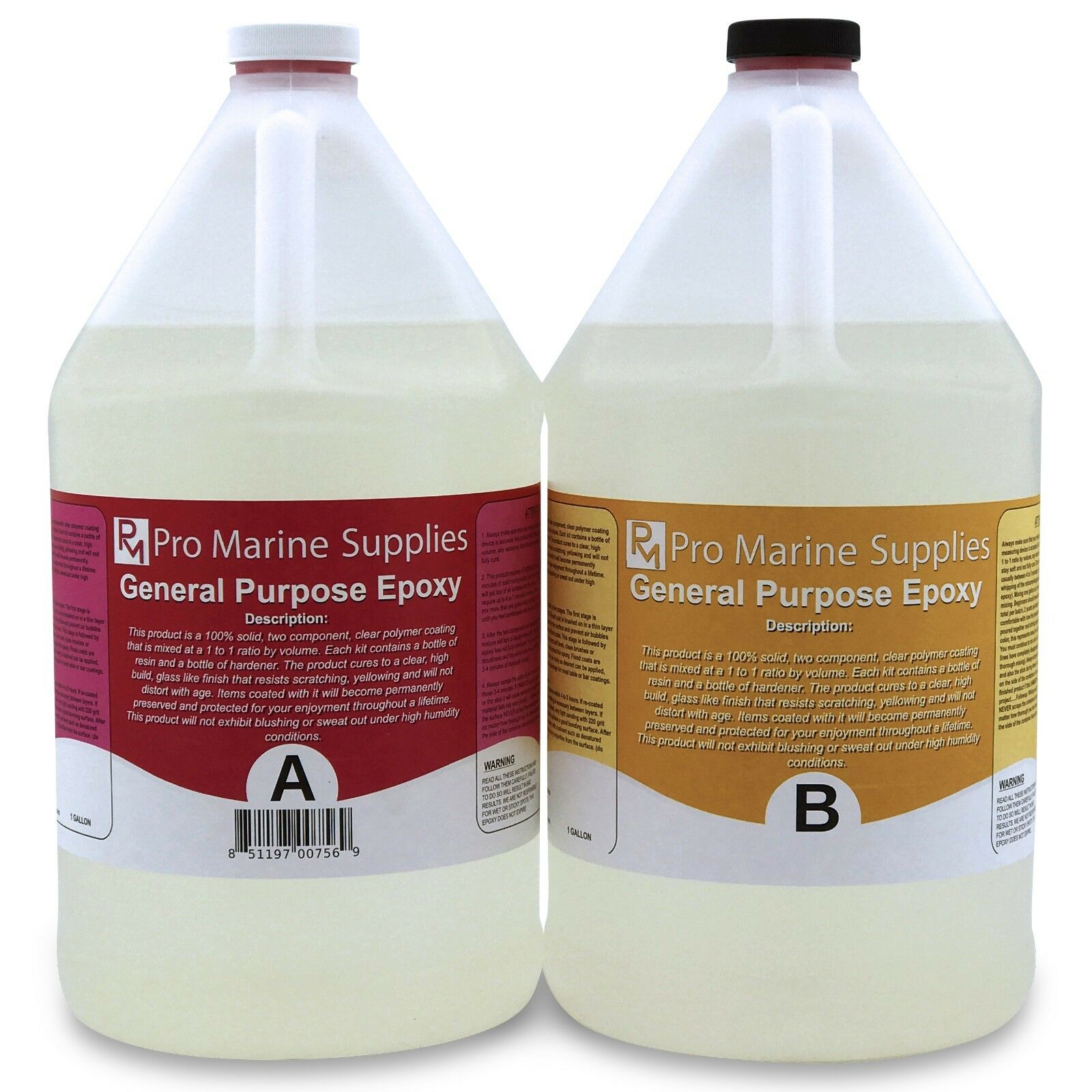-40%
EPOXY RESIN CRYSTAL CLEAR WOOD WORKING 4 COATING COMMERCIAL BAR TOP & COUNTERTOP
$ 58.44
- Description
- Size Guide
Description
MAX 1618 A/BHigh-Performance Crystal Clear Epoxy Resin System
192.0-Fluid Ounce(1.5-Gallons) Combined Volume
MAX 1618 PART A -1
US
Gallon 128 Fl.Oz
MAX 1618 Part B -½ Us Gallon 64 Fl.Oz
PRODUCT DESCRIPTION
MAX 1618 A/B is our newest ultra-clear resin system engineered by our R&D laboratories that specifically address the performance aspects of absolute crystal clarity and resistance to yellowing while demonstrating high mechanical performance suitable for protective and decorative wood coatings.
MAX 1618 A/B is our lowest viscosity resin formulation which makes it suitable for sealing wood or any porous surface and create a hermetic coating that is waterproof and chemical resistant. Upon cure, MAX 1618 A/B demonstrates high surface gloss coating and durability suitable for commercial bar top, countertop and tabletop applications.
THIS KIT INCLUDES YORKER CAPS (Spouted) FOR CONTROLLED DISPENSING.
*
Use these Yorker Caps to dispense the material with ease and minimize over pouring and reduce spills. We do not recommend using
dispensing pumps.
The curing agent or PART B of
any
epoxy resin system is sensitive to moisture and carbon dioxide, which will react with the curing agent and form carbamate crystals
(salt-like crystals that form on the tip of the pump) and reduce reactivity.
CARBAMATE CRYSTALS THAT FORM ON THE PUMP WHEN THE CURING AGENT IS EXPOSED AMBIENT MOISTURE AND CARBON DIOXIDE. THESE CRYSTALS ARE INSOLUBLE IN EPOXY RESIN RESULTING IN CONTAMINATION AND CAUSES POOR CURE AND AMINE-BLUSHING.
Unless the kit is used continuously and within a short period of time, using dispensing pumps will cause more problems than ease-of-use.
The pump leaves the bottle open to moisture (from the pressure-relief hole) and unless you plan on using the whole kit in less than a month, the curing agent will degrade and cause other curing problems.
Use these Yorker caps and cut the tip to meter the orifice of the of the tip for accurate dispensing.
When done, just replace the tip cap and it will exclude ambient moisture and air and keep the resin system viable for years.
To use the caps, cut off the tip to the desired hole size, and attach, do not cut past the ridge line that keeps the tip cap in place.
To dispense, lay the plastic jug unto its side and apply pressure on the bottle to dispense the contents.
When done replace the tip cap and the container is sealed and it will be usable for years.
MAX 1618 A/B
ABSOLUTE CLARITY AND TRANSPARENCY
Note the clarity of the MAX 1618 A/B specimen cast.
MAX 1618 A/B 1/16 Inch Thick
Coating On Western Red Cedar
Commercial Tabletop Coating
.
*
MAX 1618 A/B COLOR STABILITY COMPARISON
Clear epoxy systems formulated using plasticizers and accelerators such as the specimen on the left demonstrates poor color stability even if it is unexposed to direct sunlight or elevated temperature. Note the MAX 1618 A/B specimen that was formed at the same time and kept in a temperature controlled (25.0°C +/- 0.5 °C) chamber that filters out any UV radiation from an ambient light source.
Competitive brand clear resin system formulated with nonylphenol plasticizers after sunlight exposure.
Poor color stability is common to 1:1 mix ratio resin system, caused by the over use of filler or plasticizer additives.
PHYSICAL PROPERTIES AND CURED PROPERTIES
Density
1.10 g/cc +/- 0.03 grams per cubic centimeter Part A
0.98 +/- .05 grams per cubic centimeter Part B
1.09.+/-.03 grams per cubic centimeter Mixed
Pounds per Gallon Mixed
9.07 +/- .02 Pounds Per Gallon
Form and Color
PART A = Clear Liquid Gardner Color Scale
<1 (Similar to Glycerin)
PART B = Clear Liquid Gardner Color Scale
<1 (Similar to Glycerin)
MIXED = Clear Gardner Color Scale
1 (Cured Specimen 50 Grams Mass)
Viscosity
PART A = 980 to 1040 cPs @ 25ºC
PART B = 300 to 310 cPs @ 25ºC
MIXED = 377 cPs @ 25ºC
Mix Ratio
100 Parts “B” to 50 Parts “A”
By Weight Or 2:1 By Volume
Working Time
30 Minutes @ 25ºC (300 gram mass)
Peak Exotherm Temperature
174ºC (300 gram concentrated mass) after 50 minutes
Handle Time
6–8 Hours Set to Touch @ 25ºC
10 Hours Handling Time @ 25ºC
Maximum Temperature
95ºC
Cured Durometer Hardness
87 to 93 Shore D Scale
Glass Transition
105ºC
Full Cure Time
Accelerated Cure Schedule
36 Hrs. Minimum @ 25ºC
Cure Time Will Be Longer Below @ 25ºC
4 hours at 25ºC plus 60 Minutes @ 110ºC
PRACTICAL GUIDE ON HOW TO USE THIS RESIN SYSTEM
Review All Published Data Regarding This Product.
Proper Usage Data And Other Detailed Information Are Posted At This Page.
Mix the Resin And Curing Agent Only After The Surface Is Prepared For Application.
STEP 1. SURFACE PREPARATION
The quality of adhesion of any coating or adhesive is dependent on how well the surface is prepared. The resin system must be able to properly 'wet-out' the surface to form a continuous film. Surfaces demonstrating poor wettability prevents the liquid resin from forming a cohesive bond. Improper surface wetting yields poor adhesion and will delaminate during use.
Wetting is the ability of a liquid to interfaces or wet-out a solid surface; its dynamics is expressed as surface tension.
A surface that demonstrates low surface tension, such as waxed surface, oily surface or slick plastics like Teflon will prevent the liquid resin to wet-out and cause poor adhesion. In nature, leaves demonstrate water repellency or hydrophobicity that helps it shed water from its surface.
In the same respect, if the surface is coated from a previous application, the epoxy adhesion is limited to adhesion quality of the primary coating is applied over. Make sure to remove any loose or peeling old coating before application to avoid delamination.
If possible remove the old coating by mechanical sanding or power washing so the applied epoxy is in direct contact with the base substrate.
Applying a coating over oil-based stain should be avoided.
POOR WETTING OF THE RESIN (CRAWLING) DUE TO OIL-BASED STAIN APPLIED ON WOOD
How To Determine If The Surface Is Suitable For
Coating Or Bonding Applications
Why Epoxy Coatings Beads-up And Separate. Testing And Surface Preparation Before Epoxy Application. - YouTube
Video will open in a new window
Using the eBay App? Paste link into a browser window:
[isdntekvideo]
WATER BEAD TEST
Clean tap water is applied onto a flat
surface. The water is then spread into a thin film.
Observe how the film of water behaves for the next 60 seconds.
If the film of water retracts or puddles into separate globs, the surface is not suitable for resin application.
If the film of water stays as continuous film, the surface is suitable for the resin application.
High gloss reading indicates a very flat surface profile.
Generally yields low surface tension that demonstrates poor surface wettability
Note the resin separation (called crawling or beading)
that was applied on unprepared polyurethane-coated wood.
One side of the surface is lightly abraded using a scouring pad.
Note the lower gloss reading
Water Bead Test On Prepared Surface
The water break test can detect contamination on substrates and its suitability for a coating or adhesive for bonding application. This test indicates that the surface tension of the water is greater than the force that would otherwise hold it to the hydrophilic surface being tested. In other instances, the time until a “break” in the water sheet is measured in seconds. A “break” within a specified time, often 10 seconds, indicates a contaminated surface. On severely contaminated parts, the water will “bead up” in discreet and disconnected beads of various sizes.
This test may also be conducted by spraying the surface with clean water and watching for a water break in the ways described above. The analysis is based on the concept that the surface being tested for cleanliness is hydrophilic, and the contaminant of concern is hydrophobic in nature.
The film of water on a clean surface will start out as a continuous sheet that will either dry without any discontinuities forming in the film or with a single defining line that recedes down the surface as the water drains off.
The Following Surface Preparation Procedures Are Recommended .
METALS AND CONCRETE
Degrease Metals– Wipe surface with a lint-free rag dampened with Methyl Ethyl Ketone (MEK) or acetone to remove all oil, dirt, and grease.
Degrease Concrete- Use 2 cups of TSP (trisodium phosphate) detergent per 5 gallons of hot water and scrub with a stiff deck brush. Rinse with water and allow to dry.
Etch Metals – For optimum results, metal parts should be immersed in a chromic acid bath solution consisting of:
Sodium Dichromate
4 Parts By Weight
Sulfuric Acid
10 Parts By Weight
Water
30 Parts By Weight
The solution is held at 160°F (71°C), and the parts left immersed for 5 to 7 minutes. Rinse – remove metal parts from etching bath and rinse with clean water. (distilled water is recommended).
Etch Concrete- Use commercially sold concrete etching solution (hydrochloric acid based works best). Neutralized per instructions, rinse and allow to dry thoroughly.
ALTERNATE PROCEDURE
Degrease, scour and dry – Often etching as outlined above is not practical. The metal surfaces may be cleaned by degreasing as noted above, scouring with an alkaline cleanser followed by rinsing and drying.
Degrease and dry – Degrease the surface as noted above, sand or sandblast the surface lightly but thoroughly. Rinse with acetone or Methyl Ethyl Ketone (MEK), and dry.
GLASS
Degrease – With acetone as above, or with a strong boiling solution of a good grade household detergent.
Etch – For optimum results, degreasing can be followed by the chromic acid bath outlined above.
WOOD
Sand – Bonding surfaces should be sanded lightly, but thoroughly to remove all external contamination.
Clean – Carefully remove all dust, or particles of wood from sanded areas. A stiff and clean brush or compressed air can be used.
PLASTIC
Clean – Remove all dirt, oil, or other surfaces contaminated with detergent soap or degreasing solvent and water, followed by thorough rinsing and drying. A solvent that does not have a detrimental effect may also be used.
Sand – Surfaces to be bonded should be sanded lightly, but thoroughly to remove surface sheen.
Clean – Carefully remove all dust or particles of plastic from the sanded area. A clean brush, lint-free cloth, or compressed air may be used.
STEP 2. CHECK THE PART A OR RESIN BOTTLE FOR CRYSTALLIZATION
During the winter months, the PART A or RESIN component may crystallize and cause poor cure performance.
Our MAX Epoxy Resins are formulated with high purity grade resin polymers which makes it prone to crystallization when exposed to temperatures below 57°F. Crystallization can also occur after the resin has been stored over a period. It will appear as a waxy white mass at the bottom of the bottle. The PART A or RESIN component must be in its liquid form to thoroughly mix with the PART B or curing agent to achieve full cure.
DO NOT USE UNLESS PROCESSED
View the following video for identification and processing.
STEP 3. DETERMINE THE AMOUNT THE BATCH SIZE NEEDED
The coating thickness is a big factor that dictates resin coverage. For protective coatings, a minimum coating thickness of 0.010-inch or 10 mils is recommended. Thicker coating thickness up to 0.500 mils or 1/2 inch per can be applied; however, consider the exothermic heat the resin produces when cured in a concentrated mass.
Calculate the amount to be mixed by measuring the length x width x thickness of the area to be coated to obtain the cubic volume of the resin needed.
Use These Factors To Convert Gallon Needed Into Volumetric Or Weight Measurements.
Fluid Gallon To Volume Conversion
1 Gallon = 231 Cubic Inches
1 Gallon = 128 Ounces
1 Gallon = 3.7854 Liters
1 Gallon = 4 Quarts
1 Gallon = 16 Cups
Fluid Gallon Mass Conversions
1 Gallon Of Mixed Unfilled Epoxy Resin = 9.23 Pounds
1 Gallon Of Mixed Unfilled Epoxy Resin = 4195 Grams
Take into account that some of the coating thickness will be absorbed into the porosity. Mix a batch of the resin and curing agent and apply it onto the bare wood first and allow to cure until it has set dry to the touch.
The larger the mass, the higher the exothermic temperature is generated, the shorter the working time.
To calculate coating thickness of 0.010-inch or 10 mils, review the following;
Calculation: 1608 / 10 = 160.8 Square Feet 1 Gallon Coverage
For high-build or thick casting of 1/2 inch (500.0 mils)
Calculation: 1608 / 500 = 3.21 Square Feet 1 Gallon Coverage
Begin by mixing a small batch to gain experience with the polymerization process of the resin system. Blending amounts greater than 1000.0 grams or 1 quart in volume requires careful mixing and ensuring the mixed resin is applied and used within the established working time to prevent exothermic "run-away" reaction.
Do not let the mixed resin to sit in mass greater than 10 minutes. The heat generated during polymerization will accelerate the chemical reaction and cause a 'run-away' reaction to occur that can generate temperatures above 300°F and cause an uncontrollable chemical reaction. Mix the proper amount of resin and curing agent and apply within 10-15 minutes to avoid this from occurring.
This application will seal the surface and prevent further absorption and prevent air bubbles from outgassing that will cause unsightly bubbles from getting entrapped in the coating.
The sealing application will also cause "grain-raining' to occur.
When a coating is applied over wood, fibers will begin to swell as it is impregnated with the resin.
Raised grains are small end fibers protruding from the coating causing unsightly unevenness.
Allow the applied resin to cure and lightly sand the surface using fine-grit sandpaper.
Once the surface is prepared, apply the second coat which will yield a smooth blemish free coating.
STEP 4
.
MIXING PROCEDURE
The two components must be mixed thoroughly to eliminate problems such as tacky or uncured spots.
Use the "two container method" as demonstrated in this video demonstration, which ensures a homogenous mixture of the resin and curing agent.
Click Window To Watch Video Demonstration
TWO CUP MIXING METHOD TO AVOID TACKY SPOTS
Click Window To Watch Video Demonstration
PROPER MIXING TECHNIQUE
How To Mix Epoxy Resin For Food Contact Coating. Avoid Tacky Spots, Minimize Air Bubble When Mixing - YouTube
Video will open in a new window
Using the eBay App? Paste link into a browser window:
[isdntekvideo]
STEP 5.
APPLICATION DEMONSTRATIONS
Condition the ambient temperature to 75
°F
for best results. Ensure that the work area is dust free and well ventilated. MAX 1618 is self-leveling and will continue to flow until it polymerization converts it to a solid phase. It can be applied by using a bristle or high-density foam brush/roller or poured into place. MAX 1618 is self-leveling, ensure the surface is level and secure any leaks by using tape to create a temporary patch and prevent leakage.
ROTO-COATING WOOD TURNED BOWL
Click Window To Watch Video Demonstration
Commercial Restaurant Table Top
Click Window To Watch Video Demonstration
HOW TO APPLY EPOXY RESIN ON TABLE TOPS
The video will open in a new window
Multiple Pour Or Layering For Thick Coat Application
Click Window To Watch Video Demonstration
EPOXY THICK COATING APPLICATION MULTIPLE POURING
The video will open in a new window
AIR BUBBLE REMOVAL TECHNIQUE
Click Window To Watch Video Demonstration
HOW TO REMOVE AIR BUBBLES FROM AN APPLIED EPOXY COATING, ALSO HELPS WITH LEVELING AND FLOW - YouTube
Video will open in a new window
STEP 6.
CURING
To achieve the best cure results, the ambient condition should be between 75
°F
to 85
°F
and the relative humidity is below 80%. The colder the temperature the longer takes to fully cure. Use an infrared lamp to warm the ambient temperature. Infrared lamps also work well for warming large work areas.
Post Curing at 150°F for 2 hours will accelerate full curing.
Rinse the Surface with warm water and mild detergent before use.
CUTTING AND POLISHING
Allow to fully cure for 48 hours before polishing or machining. MAX 1618 can be cut, ground or CNC or lathe machined to shape. Polishing improves scratch resistance. The transparency is also restored after machining by wet sanding and then p
olish with abrasive free wax or polish.
Click on the picture to view test video. The video will open in a new window.
POLISHING
Click on the picture to view test video. The video will open in a new window.
HOW TO POLISH EPOXY COATED TABLE TOP
Video will open in a new window
DEGLOSSING
Once the applied coating fully cures, deglossing the surface to create a satin finish can be easily done using an abrasive pad. In this demonstration, a
SCOTCHBRITE
pad was used to de-gloss the surface. Note the dramatic decrease in gloss after a light polishing with the abrasive pad. Very-fine sandpaper (wet-sanding) also works well.
Heat Resistance
By Shore Durometer Hardness Test
The heat resistance of MAX 1618 A/B was tested by heating a 2-inch cube in 5-degree increments and the Shore hardness was determined using both the Shore A and D scale. This test demonstrates the heat resistance of the MAX 1618 A/B by determining at what temperature the Shore Hardness reading dramatically change. At 140 °F, a considerable change in Shore D Hardness Scale occurred due to the sharp needle-like indenter of the equipment began puncturing the surface of the specimen which may make the Scale D Hardness an unreliable test data.
The Shore A scale demonstrated a dramatic change in hardness at 240°F which demonstrates it maximum heat tolerance.
Shore Hardness is a measure of the resistance of a material to penetration of a spring-loaded needle-like indenter.
Dr. Dmitri Kopeliovich
The hardness of p
olymers
(rubbers, plastics) is usually measured by Shore Durometer scales.
Shore
Durometer A scale is used for testing soft
Elastomers
(rubbers) and other soft polymers.
The hardness of polymer materials
(t
hermoplastics
, t
hermosets
) is measured by the scale. Shore hardness is tested with an instrument called durometers. A Durometer utilizes an indenter loaded by a calibrated spring. The measured hardness is determined by the penetration depth of the indenter under the load.
Two different indenter shapes and spring loads are used for two scales; A and D.
The loading forces of Shore A: 1.812 lb (822 g), Shore D: 10 lb (4536 g).
Shore hardness value may vary in the range from 0 to 100.
Maximum penetration of each scale is 0.097-0.1 inch.
Rubber Shore Hardness and typical applications
Hardness
Application
30 Shore A
Art gum erasers
35 Shore A
Rubber bands
40 Shore A
Can tester pads
50 Shore A
Rubber stamps
55 Shore A
Pencil erasers
60 Shore A
Screen wiper blades
65 Shore A
Automotive Tires
70 Shore A
Shoe heels
75 Shore A
Abrasive handling pads
80 Shore A
Shoe Soles
85 Shore A
Tap washers
90 Shore A
Typewriter rollers
95 Shore A
Fork lift
solid tires
60 Shore D
Golf ball
70 Shore D
Metal forming wiper dies
80 Shore D
Paper-making rolls
COLOR ADDITION
Color pigment addition to an epoxy resin system with a scale - YouTube
[isdntekvideo]
5 COLORS IN ONE KIT- 2 OUNCES PER COLOR
https://www.ebay.com/itm/311946633043
FOR TRANSPARENT COLOR TINTS
MAX EPOXY COLOR TINT
RED*YELLOW*BLUE
https://www.ebay.com/itm/ 222637119121
*****************************************************
PLEASE CHECK OUT OTHER AVAILABLE
RESIN SYSTEMS AT OUR eBay STORE
For our complete listing, please
Visit our eBay store!
DON'T FORGET OUR EPOXY MIXING KIT
Click The Link To Add To Order
https://www.ebay.com/itm/222623932456
EVERYTHING YOU NEED TO MEASURE, MIX, DISPENSE OR APPLY
Proportioning the correct amount is equally as important to attain the intended cured properties of the resin system.
T
he container in which the epoxy and curing agent is mixed is an important consideration when mixing an epoxy resin system.
The container must withstand the tenacity of the chemical and must be free of contamination.
Most epoxy curing agent has a degree of corrosivity, as a general practice, protective gloves should be worn when handling chemicals of the same nature.
MIXING KIT CONTENTS
1 Each Digital Scale -Durable, Accurate Up To 2000.0 Grams
4 Each 32-ounce (1 Quart) Clear HDPE Plastic Mix Cups
4 Each 16-ounce (1 Pint) Clear HDPE Plastic Mix Cups
5 Pairs One Size Fits All Powder-Free Latex Gloves
2 Each Graduated Syringes
8 Wooden Stir Sticks
8 Assorted Size Foam Brush
IMPORTANT NOTICE
Your purchase constitutes the acceptance of this disclaimer. Please review before purchasing this product.
The user should thoroughly test any proposed use of this product and independently conclude the satisfactory performance in the application. Likewise, if the manner in which this product is used requires government approval or clearance, the user must obtain said approval.
The information contained herein is based on data believed to be accurate at the time of publication. Data and parameters cited have been obtained through published information, PolymerProducts and Polymer Composites Inc. laboratories using materials under controlled conditions. Data of this type should not be used for a specification for fabrication and design. It is the user's responsibility to determine this Composites fitness for use.
There is no warranty of merchantability for fitness of use, nor any other express implied warranty. The user's exclusive remedy and the manufacturer's liability are limited to refund of the purchase price or replacement of the product within the agreed warranty period. PolymerProducts and its direct representative will not be liable for incidental or consequential damages of any kind. Determination of the suitability of any kind of information or product for the use contemplated by the user, the manner of that use and whether there is any infringement of patents is the sole liability of the user.
